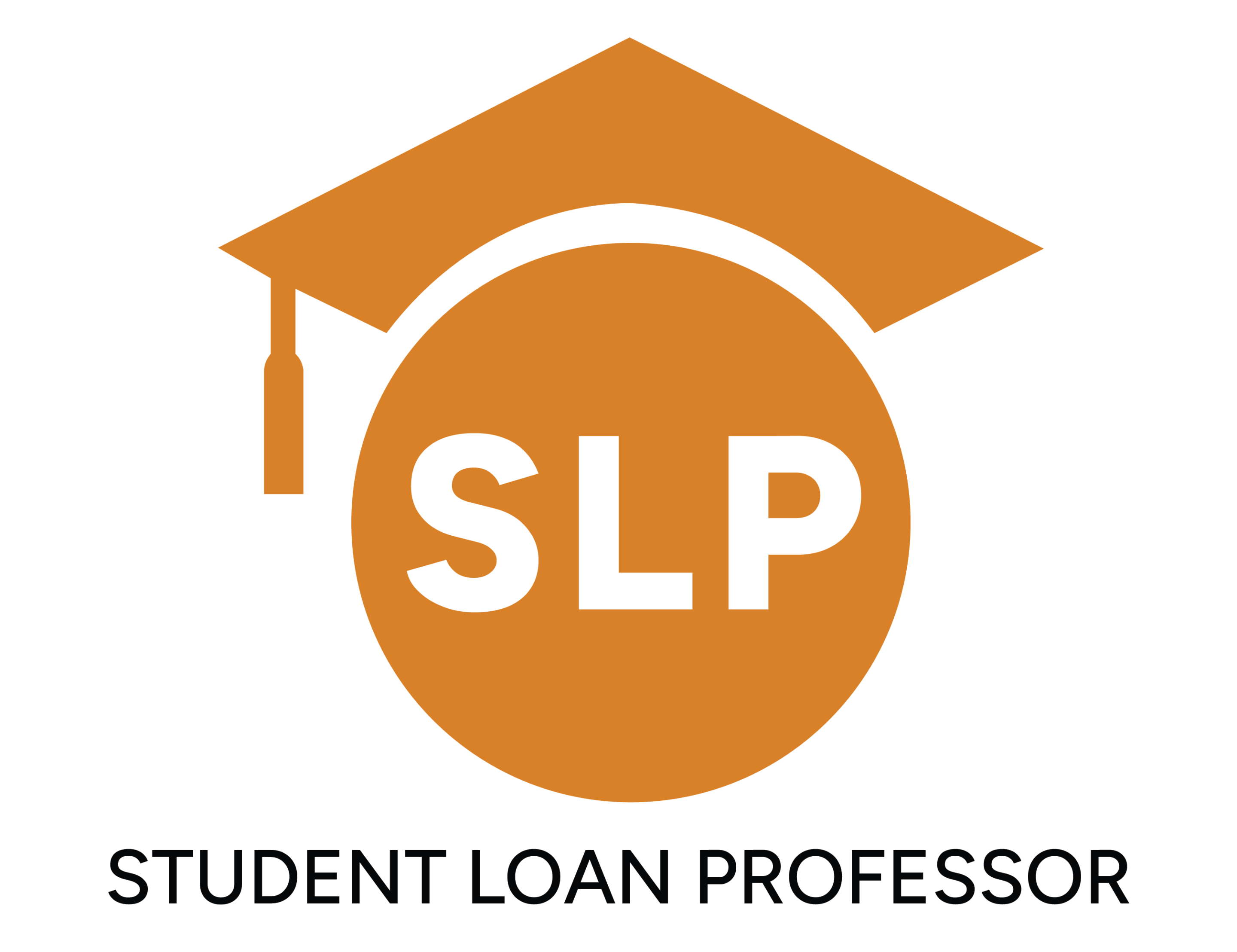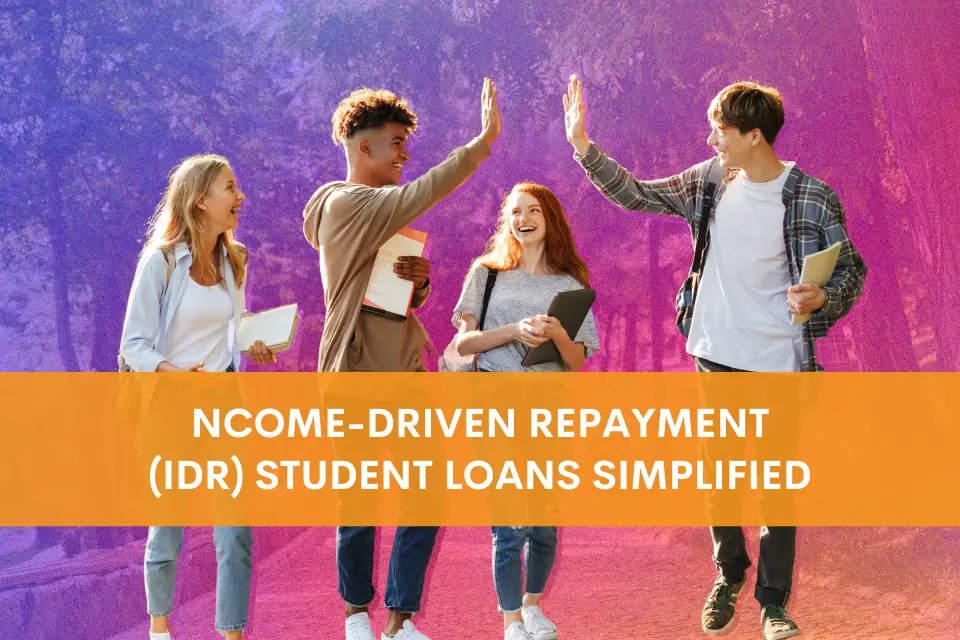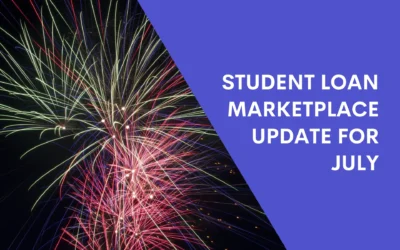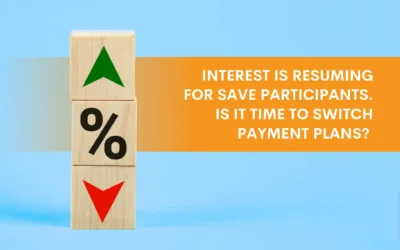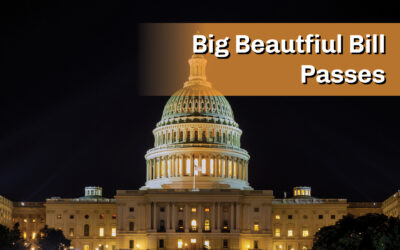Key Takeaways
- Income-Driven Repayment (IDR) plans cap federal student loan payments at 5%–20% of discretionary income, making repayment more affordable.
- IDR plans provide loan forgiveness after 20–25 years of qualifying payments or 10 years for eligible Public Service Loan Forgiveness (PSLF) borrowers.
- Recent adjustments under the SAVE Plan introduce groundbreaking benefits, including $0 payments for low-income borrowers and capped unpaid interest accrual.
- Borrowers must recertify their income and family size annually to stay on the plan and ensure accurate payments.
- IDR plans offer flexibility but may result in higher total interest paid over time compared to standard repayment plans.
What Is Income-Driven Repayment (IDR)?
Income-driven repayment (IDR) plans are designed to make federal student loan payments more manageable by basing them on a borrower’s discretionary income and family size.
Unlike fixed repayment plans, IDR adjusts student loan payments annually to align with a borrower’s financial situation, ensuring affordability.
IDR plans are especially beneficial for borrowers with high student loan balances compared to their income, as well as for those pursuing careers in public service non-profits.
How It Works
Income-driven repayment plans calculate monthly payments as a percentage of a borrower’s discretionary income, typically 5%-20%, depending on the plan. The payments can then be adjusted annually according to changes in income or household size.
To understand how it works, you’ll need to understand three main factors:
- Discretionary Income: For most IDR plans, discretionary income is the difference between your adjusted gross income (AGI) and 150%-225% of the federal poverty guideline for your household size.
- Loan Forgiveness: After 20-25 years of qualifying payments, any remaining balance is forgiven. For PSLF (Public Service Loan Forgiveness) borrowers, the forgiveness period is just 10 years.
- Annual Recertification: Borrowers must update income and family size information yearly to remain eligible and ensure accurate payments.
Types of IDR Plans
The federal government offers four main IDR plans, each with distinct features.
1. Saving on a Valuable Education (SAVE) Plan
The Saving on a Valuable Education (SAVE) Plan, introduced in 2023 as a replacement for the REPAYE plan, is designed to be one of the most borrower-friendly IDR options.
Individuals earning less than 225% of the federal poverty level, roughly $32,800 per year for one person or $67,500 for a family of four, are eligible for $0 monthly payments.
Additionally, SAVE lowers payments on undergraduate loans from 10% of discretionary income to 5%, significantly reducing monthly costs.
What makes SAVE stand out is its forgiveness policy for small balances. Borrowers with an original loan balance of $12,000 or less can have their remaining loan balance forgiven after just 10 years of payments, a substantial improvement over the 20–25 years required by other plans.
The plan also addresses unpaid interest by ensuring that it does not accumulate if borrowers keep up with their monthly payments, preventing loan balances from ballooning over time.
For borrowers already enrolled in REPAYE, the translation to SAVE was automatic, but others need to apply to benefit from this plan’s advantages.
Political Challenges to the SAVE Plan
As of the time of writing, the SAVE Plan has encountered significant political opposition and is currently blocked by the courts. This has cast uncertainty on its future, with the potential for repeal under the Trump administration or other political shifts. Borrowers considering this plan should stay informed of ongoing developments and evaluate alternative options if necessary.
💡 Tip: Monitor reliable sources like the Department of Education and consult with a financial advisor to stay updated on the SAVE Plan’s status and potential impacts.
2. Income-Based Repayment (IBR)
The Income-Based Repayment (IBR) plan has been a popular choice for borrowers who experience financial hardship.
This plan calculates payments as 10% or 15% of discretionary income, depending on when the loans were disbursed.
Borrowers who took out loans after July 1, 2014, enjoy the lower 10% cap and a shorter repayment term of 20 years, while those with older loans pay 15% and qualify for forgiveness after 25 years.
IBR is particularly beneficial for borrowers with substantial loan balances compared to their income, as payments are designed to be affordable while still progressing toward eventual loan forgiveness.
However, borrowers must demonstrate financial hardship to qualify, and those who fail to recertify their income annually risk being moved to a higher standard repayment amount.
3. Pay As You Earn (PAYE)
Pay As You Earn (PAYE) is another IDR plan tailored to borrowers facing financial difficulties. PAYE payments are capped at 10% of discretionary income and will not exceed the amount required under a standard 10-year repayment plan.
Forgiveness is granted after 20 years of qualifying payments, making PAYE particularly appealing to borrowers who anticipate a long repayment timeline.
Eligibility for PAYE is more restrictive compared to other plans. Only borrowers who took out loans after October 1, 2007, and received a loan disbursement on or after October 1, 2011, qualify.
This restriction targets PAYE towards more recent borrowers. While PAYE offers significant benefits, including lower payments and shorter forgiveness timelines, its stringent eligibility criteria mean it may not be accessible to all borrowers.
4. Income-contingent Repayment (ICR)
The Income-Contingent Repayment (ICR) plan is unique in that it is the only IDR option available for Parent PLUS loan borrowers after a direct consolidation loan.
Payments under ICR are the lesser of 20% of discretionary income or a fixed amount based on a 12-year repayment term, adjusted for income.
Forgiveness is granted after 25 years of qualifying payments.
Eligibility
Eligibility for IDR student loans is based on the loan type. To qualify for an IDR plan, borrowers must have federal student loans such as Direct Loans or Federal Family Education Loans (FFEL).
While most borrowers are eligible for IDR, some plans, like PAYE and IBR, impose additional restrictions based on loan disbursement dates and financial hardships.
Parent PLUS loans become eligible for ICR only after being consolidated into a Direct Loan. Private student loans do not qualify for any IDR plan.
IDR Student Loan Step-by-Step
1. Review Your Loans
Start by confirming that you have federal student loans, as private student loans are not eligible for IDR plans. You can log in to your Federal Student Aid account at StudentAid.gov to access a detailed summary of your loans, including their types, balances, and loan provider information.
This step is critical because certain IDR plans are available only for specific loan types, such as Direct Loans.
2. Understand Your Options and Choose a Plan
Selecting the right plan is essential for optimizing your repayment strategy. Use the Federal Student Loan Aid Simulator, a free online tool, to compare IDR plans side-by-side.
This tool allows you to input your income, family size, and loan details to estimate monthly payments, the total cost of repayment, and the potential forgiveness amount under each plan.
Consider factors like the length of repayment, your financial goals, and whether you aim to qualify for Public Service Loan Forgiveness (PSLF) when deciding on the best plan for you.
For instance, if you have undergraduate loans and a low income, the SAVE Plan may offer the lowest monthly payments and faster forgiveness.
Conversely, if you have Parent PLUS loans, consolidating and choosing the ICR plan might be your only IDR option.
3. Submit Your Application Online
Once you’ve identified the best IDR plan for your situation, you can apply directly through StudentAid.gov or by contacting your loan servicer for a paper application.
Be prepared to provide proof of income and family size. This often includes your most recent federal tax returns or pay stubs from the past 90 days.
If your income has changed significantly since your last tax filing, you may need to provide additional documentation, like a letter from your employer or a signed statement detailing your financial situation.
During this process, your loans may be placed into temporary forbearance, meaning you won’t need to make payments while your application is processed.
However, keep in mind that interest may continue to accrue during this time.
4. Await Approval and Start Making Payments
The approval process typically takes 2-4 weeks, but processing times can vary depending on the servicer.
Once your application is approved, your loan servicer will notify you of your new monthly payment amount and when payments under the new plan will begin.
Be sure to review the terms of your IDR plan carefully to understand your responsibilities and how your monthly payments are calculated.
If your application is denied due to incomplete documentation or eligibility, don’t panic. Your servicer will provide instructions on how to correct any issues. You can also explore other repayment options, such as extended or graduated plans if IDR doesn’t meet your needs.
5. Recertify Your Income and Family Size Annually
Maintaining your IDR status requires annual recertification. This involves updating your income and family size to ensure your payments remain accurate.
If you gave consent during your application for the Department of Education to access your tax information, recertification will happen automatically. Otherwise, you’ll need to provide updated proof of income each year.
6. Monitor Your Progress Toward Forgiveness
One of the key benefits of IDR plans is loan forgiveness after 20 or 25 years of qualifying payments, depending on your plan and loan type.
Keep track of your payment history to ensure all qualifying payments are being accurately counted.
For borrowers working toward Public Service Loan Forgiveness (PSLF), ensure your employment certification forms are up-to-date to receive proper credit for your public service work.
Pros and Cons of IDR Student Loans
Pros
- Affordable Payments: Payments are tailored to your financial situation, often significantly lower than the standard plan.
- Loan Forgiveness: Remaining balances are forgiven after 20-25 years of payments or 10 years under PSLF.
- Flexibility: Payments adjust with changes in income or family size, accommodating life events.
- Interest Subsidies: Plans like SAVE prevent unpaid interest from accruing, reducing long-term costs.
Cons
- Longer Repayment Periods: Extending repayment terms can result in higher total interest costs.
- Taxable Forgiveness: Forgiven balances may be taxed as income after 2025, depending on federal and state laws.
- Spousal Income Factor: Joint filers must include their spouse’s income, potentially increasing payments.
- Annual Recertification: Missing deadlines can result in higher payments under the standard plan.
A Note on IDR Programs: Adapting to Change
Income-Driven Repayment (IDR) programs, including the SAVE Plan, are currently under heightened scrutiny from lawmakers and the courts. This attention could result in significant overhauls to the programs within the next two years.
For borrowers utilizing IDR plans, it’s critical to remain proactive. Reassess your payment plan annually to ensure you are on the most advantageous option based on the latest regulations. Regularly checking for updates and consulting with a student loan advisor can help you navigate these changes and make informed decisions.
Take Control of Your Student Loan Repayment Today
Choosing the right IDR student loan can be a big step, especially if your goal is to capitalize on loan forgiveness and get flexible payment terms.
If you’re uncertain which IDR plan is the best for you, contact the Student Loan Professor, and we’ll help you find the plan that suits your financial goals.
Brandon Barfield is the President and Co-Founder of Student Loan Professor, and is nationally known as student loan expert for graduate health professions. Since 2011, Brandon has given hundreds of loan repayment presentations for schools, hospitals, and medical conferences across the country. With his diverse background in financial aid, financial planning and student loan advisory, Brandon has a broad understanding of the intricacies surrounding student loans, loan repayment strategies, and how they should be considered when graduates make other financial decisions.
